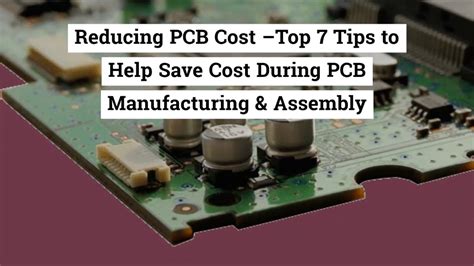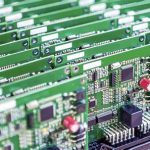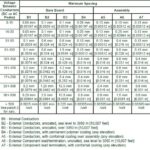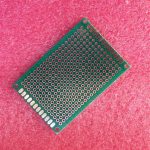PCB Design Complexity
The complexity of your PCB design is one of the primary factors influencing the cost of fabrication and assembly. More intricate designs require additional time, resources, and expertise to manufacture, resulting in higher costs. Some key aspects of PCB design complexity include:
Number of Layers
PCBs can be classified based on the number of conductive layers they contain. The most common types are:
| Layers | Description | Cost |
|---|---|---|
| Single Layer | One conductive layer, typically used for simple circuits | Lowest |
| Double Layer | Two conductive layers, one on each side of the board | Moderate |
| Multilayer | Three or more conductive layers, used for complex circuits | Highest |
As the number of layers increases, so does the cost of fabrication and assembly. Multilayer PCBs require more materials, processing steps, and precise alignment, which contribute to higher manufacturing expenses.
Board Size and Shape
The size and shape of your PCB also play a role in determining the cost. Larger boards consume more materials and may require specialized equipment for handling and processing. Additionally, non-standard board shapes, such as circular or irregular designs, can increase manufacturing costs due to the need for custom tooling and increased processing time.
Component Density
The number and type of components on your PCB directly impact the cost of assembly. Boards with a high component density require more precise placement and soldering techniques, which can be time-consuming and labor-intensive. Surface mount devices (SMDs) are generally more cost-effective than through-hole components due to their smaller size and automated assembly processes.
Material Selection
The materials used in PCB fabrication and assembly also contribute to the overall cost. The choice of materials depends on factors such as the intended application, environmental conditions, and performance requirements.
PCB Substrate Material
The most common PCB substrate materials are:
| Material | Description | Cost |
|---|---|---|
| FR-4 | A flame-retardant composite material, widely used for general-purpose PCBs | Moderate |
| High-Tg FR-4 | An enhanced version of FR-4 with better thermal and mechanical properties | High |
| Polyimide | A high-performance material with excellent thermal stability and flexibility | Highest |
| Aluminum | Used for PCBs that require efficient heat dissipation | Moderate |
The choice of substrate material directly affects the cost of fabrication. High-performance materials like polyimide and high-Tg FR-4 are more expensive than standard FR-4.
Copper Weight
The thickness of the copper layer on a PCB is measured in ounces per square foot (oz/ft²). Common copper weights include:
| Copper Weight | Thickness (mm) | Cost |
|---|---|---|
| 0.5 oz/ft² | 0.018 mm | Low |
| 1 oz/ft² | 0.035 mm | Moderate |
| 2 oz/ft² | 0.070 mm | High |
Thicker copper layers offer better current carrying capacity and heat dissipation but also increase the cost of fabrication. The choice of copper weight depends on the electrical and thermal requirements of your design.
Solder Mask and Silkscreen
Solder mask is a protective layer applied to the PCB surface to prevent accidental bridging of solder between closely spaced pads. Silkscreen is used to print text, logos, and component identifiers on the board surface. Both solder mask and silkscreen are available in various colors, with some colors being more expensive than others.
Manufacturing Volume and Turnaround Time
The quantity of PCBs you order and the desired turnaround time significantly influence the cost of fabrication and assembly.
Economies of Scale
Manufacturing PCBs in larger quantities generally results in lower per-unit costs due to economies of scale. Setup costs, such as tooling and programming, are spread across a larger number of units, reducing the overall impact on individual board prices. However, it’s essential to consider your actual production needs and avoid overordering, as this can lead to unnecessary expenses and inventory management issues.
Prototype vs. Production Runs
Prototype PCBs, which are used for testing and validation purposes, often have higher per-unit costs compared to production runs. This is because prototypes require more manual intervention, custom setup, and smaller batch sizes. As you transition from prototyping to full-scale production, the per-unit cost typically decreases.
Expedited Services
If you require a faster turnaround time for your PCBs, most manufacturers offer expedited services for an additional fee. Rush orders may involve prioritizing your job over others, working overtime, or using more expensive shipping methods. The cost of expedited services varies depending on the manufacturer and the specific requirements of your order.

Testing and Quality Control
To ensure the reliability and functionality of your PCBs, manufacturers employ various testing and quality control measures. These processes add to the overall cost of fabrication and assembly but are essential for minimizing defects and ensuring customer satisfaction.
Automated Optical Inspection (AOI)
AOI systems use high-resolution cameras and advanced image processing algorithms to inspect PCBs for manufacturing defects, such as missing components, incorrect placements, and solder bridges. AOI testing is typically included in the standard assembly process and does not significantly impact the overall cost.
X-Ray Inspection
For PCBs with hidden or obscured solder joints, such as those found in ball grid array (BGA) components, X-ray inspection may be necessary. This non-destructive testing method allows manufacturers to examine the quality of solder joints beneath components. X-ray inspection is more expensive than AOI and is typically used for high-reliability applications or when specified by the customer.
Functional Testing
Functional testing involves verifying the electrical performance of the assembled PCB to ensure it meets the design specifications. This can include in-circuit testing (ICT), boundary scan testing, or custom functional test fixtures. The cost of functional testing depends on the complexity of the PCB and the specific testing requirements.
Certifications and Standards Compliance
Depending on your industry and target market, your PCBs may need to comply with various certifications and standards. Some common examples include:
- UL (Underwriters Laboratories)
- IPC (Association Connecting Electronics Industries)
- RoHS (Restriction of Hazardous Substances)
- REACH (Registration, Evaluation, Authorization, and Restriction of Chemicals)
Achieving compliance with these standards may require additional documentation, testing, and specialized materials, which can increase the cost of fabrication and assembly. However, ensuring compliance is essential for accessing certain markets and meeting customer expectations.
Frequently Asked Questions (FAQ)
Q1: How can I reduce the cost of my PCB fabrication and assembly?
A1: To reduce PCB costs, consider the following:
– Simplify your design by minimizing the number of layers and components
– Use standard board sizes and shapes
– Choose cost-effective materials that meet your performance requirements
– Order in larger quantities to benefit from economies of scale
– Plan ahead to avoid rush orders and expedited services
Q2: What is the typical turnaround time for PCB fabrication and assembly?
A2: The typical turnaround time for PCB fabrication and assembly varies depending on the complexity of your design, the manufacturing volume, and the manufacturer’s workload. Standard lead times can range from 1-2 weeks for simple designs to 4-6 weeks for more complex projects. Expedited services can reduce the turnaround time to a few days but come at a higher cost.
Q3: How do I choose the right PCB manufacturer?
A3: When selecting a PCB manufacturer, consider the following factors:
– Experience and expertise in your specific industry or application
– Quality control processes and certifications
– Pricing and lead times
– Customer support and communication
– Flexibility in accommodating design changes or special requirements
Q4: Can I mix and match components from different manufacturers on my PCB?
A4: Yes, you can generally mix and match components from different manufacturers on your PCB, provided they meet the required specifications and are compatible with your design. However, it’s essential to ensure that the components are sourced from reputable suppliers and are of the appropriate quality to avoid issues with reliability and functionality.
Q5: What are the most common PCB assembly methods?
A5: The two most common PCB assembly methods are:
– Surface Mount Technology (SMT): Components are placed and soldered directly onto the surface of the PCB. SMT is widely used for its automation capabilities and ability to accommodate smaller components.
– Through-Hole Technology (THT): Components have long leads that are inserted into drilled holes in the PCB and soldered on the opposite side. THT is often used for larger components or when mechanical strength is a priority.
In conclusion, the cost of PCB fabrication and assembly is influenced by a multitude of factors, ranging from design complexity and material selection to manufacturing volume and quality control measures. By understanding these PCB Cost Factors and making informed decisions throughout the design and manufacturing process, you can optimize your expenses and ensure the successful production of your electronic devices.






Leave a Reply